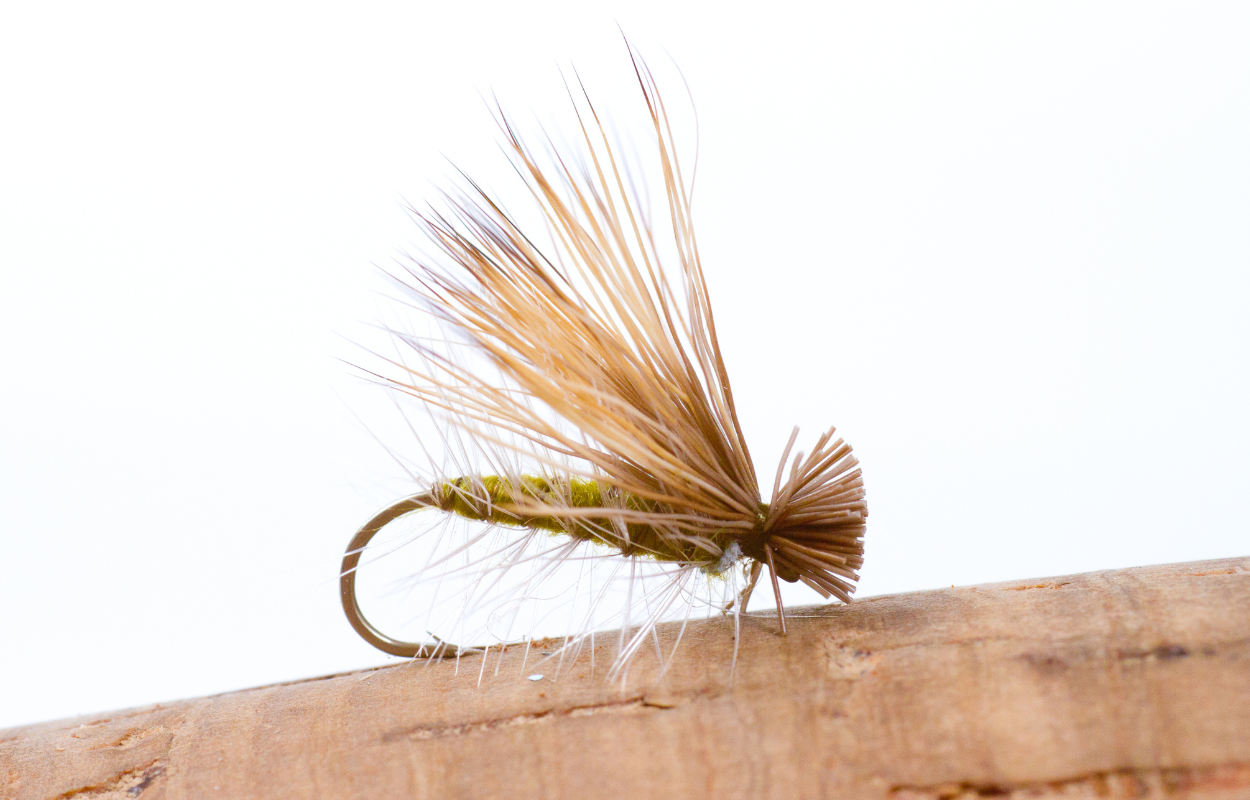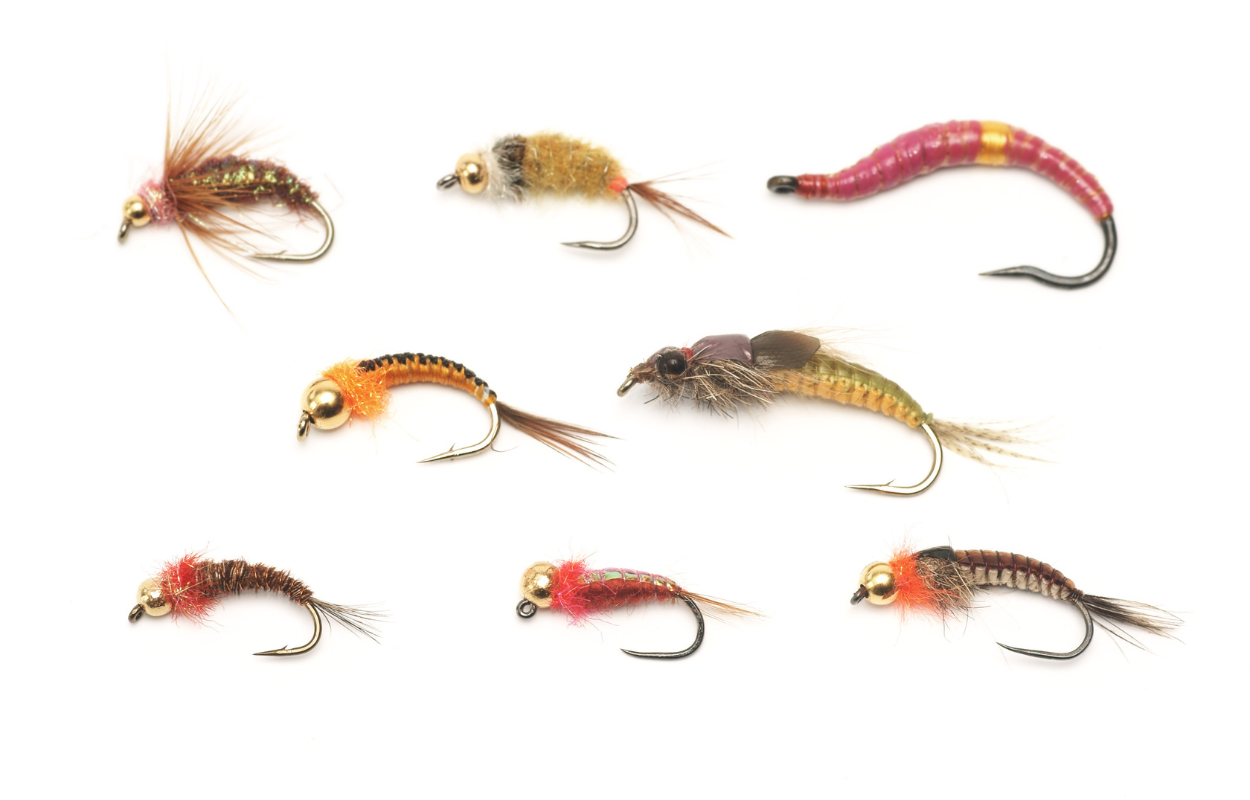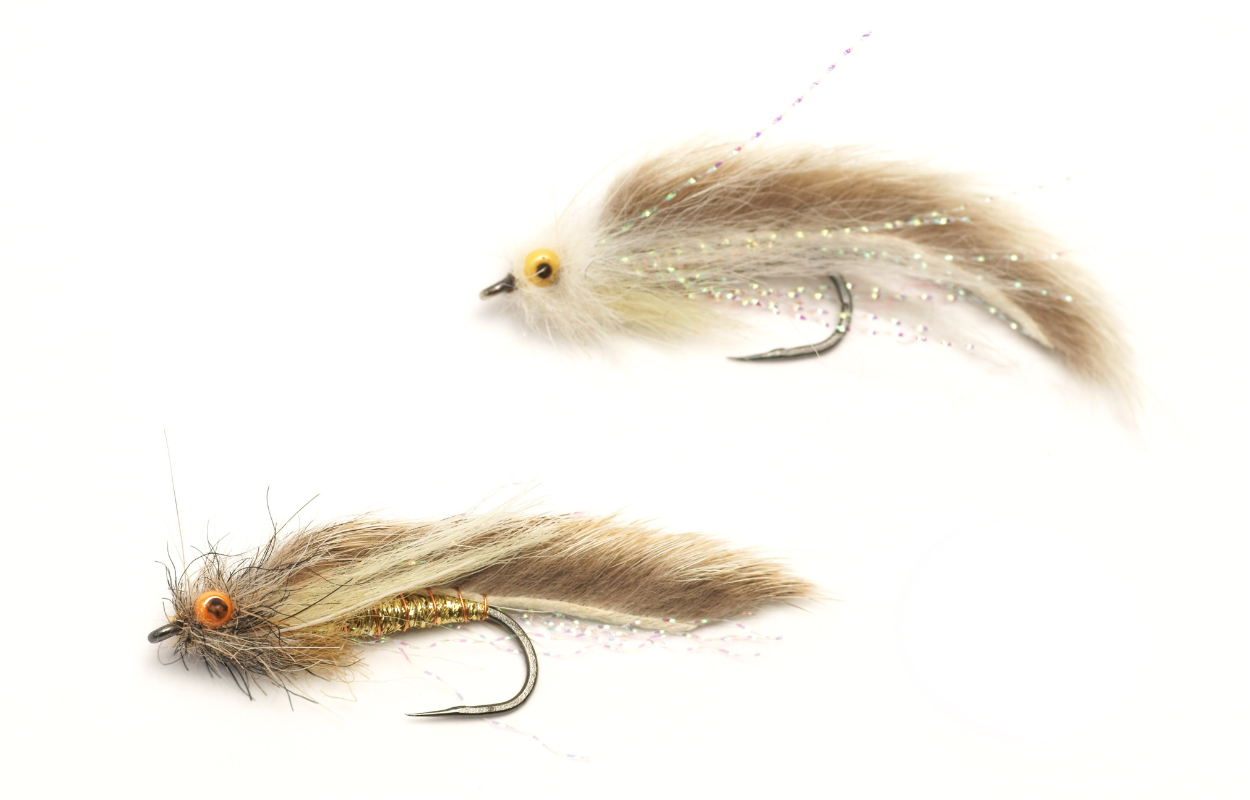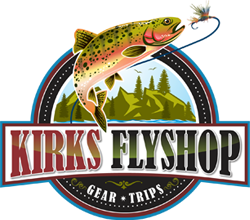For those just getting into Colorado fly fishing and understanding fly fishing flies, it may seem like a daunting task. One of the most common things that beginning anglers struggle with is deciding which type of fly to use to give you the best chance of catching a fish.
In today’s post, we’ll introduce you to the three most common categories of fly fishing flies and how to use them — dry flies, nymphs, and streamers. Regardless of your Colorado fly fishing experience, Kirks Flyshop is here to help you have the best experience possible during your time on the water. For new anglers, one of the best ways to get into the sport is through our Colorado guided fly fishing trips. We offer trips lasting four, six, and eight hours, and we guarantee that you’ll catch fish during every trip. Learn more about the types of fly fishing flies below, check the Estes Park fishing report, and then stop by our Estes Park fly shop to pick up your flies and other fly fishing gear.

Fly Fishing Flies: Dries
If you’ve seen someone fly fishing in Colorado and notice their fly sitting on top of the water, they are fishing a dry fly. These flies are fished on top of the water’s surface and can mimic hundreds of different insects, depending on your location.
These are also some of the most exciting flies to fish. If a fish sees a dry sitting on the water’s surface, it may decide to come up and take it, making for a very visual catch if and when it breaks the surface. While dry fly fishing in Colorado does make for some exciting action when fish are rising, some conditions are not conducive to fishing dries. Many fish — trout in particular — do the majority of their feeding underwater, in which case anglers will use one of the following categories of flies.

Fly Fishing Flies: Nymphs
Often one of the most successful types of fly fishing flies, nymphs are fished below the water’s surface and so named because they are designed to mimic the stage of an insect’s life during which it lives on the bed of the body of water you’re fishing. Whereas dry flies have virtually no weight on them, nymphs are often constructed with a light weight, such as a bead head, that makes them fall below the surface of the water.
Nymphing is a bit more difficult for new anglers to learn since the fish’s take happens out of sight. To combat this, some anglers use a strike indicator — a small float that is attached to the tippet of the fly outfit. Indicators float on the surface of the water, similar to a dry fly, and will dip under the water or move in some variation when a fish has taken the fly below the water. Nymphing is often a successful tactic year-round, as fish will always be below the surface.

Fly Fishing Flies: Streamers
While streamers are also fished below the surface of the water, they are a completely different fly fishing fly than a nymph. Instead of mimicking the early stages of an insect’s life, streamers are designed to imitate larger variations of fish food, including minnows, leeches, other fish, and more. Because of their size, these can often bring in some of the largest fish who think they’re getting a nice meal.
Fishing a streamer will often require stronger tippet due to the aggressive strikes that most fish use on it to ensure it doesn’t get away. When fishing these flies, always try to imitate the motion of a minnow, leech, etc. by stripping in your line to make it appear as if it’s swimming in the water. When done correctly, many fish won’t be able to resist these fly fishing flies.
There are hundreds of variations of fly fishing flies within each category, but understanding the basics is the first step toward catching fish. For young and experienced Colorado fly fishing anglers alike, our Estes Park fly fishing experts at Kirks Flyshop understand these variations better than anyone and are more than happy to help you select the perfect flies for your trip in Estes Park. Check out the Estes Park fishing report to check conditions and for help with what fly to use or stop by our Colorado fly shop today to receive unbeatable expert advice!

